- Inscrire mon établissement
- Mon espace établissement
- Espace Professionnel

- Accueil >
- Établissements de santé >
- Soins de suite / Réadaptation >
- Nouvelle-Aquitaine >
- Gironde (33) >
- Bruges (33520) >
Centre de la Tour de Gassies


Centre de la Tour de Gassies Bruges (33520)
Soins de Suite et de Réadaptation (SSR) - Médecine Physique et de Réadaptation (MPR) et en Gériatrie - Centre de Réhabilitation Psycho-sociale (CRPS) - Bruges - 33 - Gironde - Nouvelle Aquitaine

Rue de la Tour de Gassies 33520 Bruges

Présentation
Le Centre de la Tour de Gassies, établissement de rééducation et de réadaptation fonctionnelle spécialisée en MPR et Gériatrie , est implanté dans l'agglomération bordelaise, à Bruges, à proximité de la rocade, dans un environnement privilégié au cœur d'un parc arboré de 17 ha. L'établissement, hautement spécialisé en SSR , est centre de référence sur son territoire et au niveau régional. Avec 221 lits d'hospitalisation complète et 102 places d'hôpital de jour, l'établissement prend en charge des patients atteints de différentes affections dans le cadre d'une rééducation et réadaptation globale et spécialisée : neurologie (patients atteints de lésions médullaires, cérébro-lésés, maladies neuro-dégénératives, AVC...) ; orthopédie et rhumatologie ; patients amputés ; grands brûlés et gériatrie . Une équipe mobile de réadaptation H33 est également déployée et une démarche précoce d'Insertion socioprofessionnelle est proposée au sein du réseau COMETE France . Deux autres activités au sein du Centre de la Tour de Gassies complètent cette offre : - Une activité de psychiatrie, spécialisée en réhabilitation psychosociale, avec un centre de soins de proximité ( CRPS ) et un centre référent régional ( C2RP ) - Une activité médico-sociale : un ESRP/ESPO (Etablissement et Services de Pré orientation ou de Réadaptation Professionnelle) et une UEROS (Unité d'Evaluation, de Réentraînement, d'Orientation Sociale et Professionnelle).
Direction : Mme Françoise GOURGOU
Directeur Adjoint : M. Olivier THOUARD
Directrice des Soins : Mme Christelle ARIOLI
Organisme gestionnaire : UGECAM Aquitaine
- Centre de Rééducation et de Réadaptation Fonctionnelle (CRRF), Fonctionnelle (CRF)
- Centre de Soins Médicaux et de Réadaptation (CSMR)
- Centre de Soins de Suite et Réadaptation (CSSR), Gériatriques, Indifférenciés, Nutrition
- Clinique Psychiatrique, de Soins de Suite
Agrément(s), convention(s)
- Sécurité Sociale
Capacité d'accueil
- Hôpital de jour : 102 places de MPR/SSR Gériatrique + 25 places de psychiatrie
- Hospitalisation complète : 221 lits de MPR/SSR Gériatrique + 25 lits de psychiatrie
Conditions d'accueil
- Chambres individuelles/doubles, ligne téléphonique, lit médicalisé, salle de bain privative
- Consultations externes
- Restauration : Cuisine sur place
- Traitements ambulatoires
Spécialité(s)
- Affections de l'appareil locomoteur : orthopédie, rhumatologie, traumatologie
- Affections du système nerveux
- Éducation thérapeutique
- Ergothérapie
- Kinésithérapie
- Médecine physique et réadaptation
- Psychiatrie
- Rééducation des affections de l'appareil locomoteur, des traumatismes sportifs, fonctionnelle polyvalente, respiratoire
- Rhumatologie
- Soins de Suite gériatriques
- Traumatologie
- Grands brûlés
- Réhabilitation psycho-sociale
Equipement(s), plateau technique
- Ateliers d'appareillage
- Atelier de réadaptation
- Balnéothérapie
- Gymnase et Salle de renforcement musculaire
- Salles d'ergothérapie
- Salles de kinésithérapie
- Outils d'évaluation et de rééducation
- Parcours de marche
Equipe pluridisciplinaire
- Médecins spécialistes en médecine physique et de réadaptation, médecins généralistes, médecins gériatres, médecins psychiatres, masseurs kinésithérapeutes, professionnels en activités physique adaptée (A.P.A.), ergothérapeutes, ergonomes, orthoprothésistes, neuropsychologues, psychologues, orthophonistes, diététiciens, assistantes sociales
Activité(s), service(s)
- Activités Physiques Adaptées (APA) : Aquagym, gymnastique holistique
- Diététique : Diététiciennes, Cours et atelier diététique, Cuisine thérapeutique
- Réentraînement à l'effort - Épreuve d'effort
- Orthophonie
- Psychologie - Neuro-psychologie
- Psychomotricité
- Hypnose thérapeutique
- Équipement multimédia : Télévision, wi-fi
- Espaces communs : Salle de restaurant, salle de télévision
- Espaces extérieurs : Jardin, parc, terrasse
Soins de suite / Réadaptation à proximité
Le pôle de réhabilitation Psychosociale de la Tour de Gassies
Le CRPS et le C2RP accueillent les personnes présentant des troubles psychiques en leur proposant un bilan, une orientation, et des soins de réhabilitation psychosociale, dans un objectif d’aide et d’accompagnement vers l’autonomie et la citoyenneté, l’accès ou le maintien en emploi, et la reprise d’études. Les 2 services sont localisés au Centre de La Tour de Gassies à Bruges, dans l’agglomération de Bordeaux. L’admission au CRPS et au C2RP se fait via un dossier unique à envoyer au secrétariat du CRPS ou du C2RP en fonction du type de demandes. Dans le cadre de ses missions de Centre référent régional, le C2RP propose des sensibilisations et des formations à destination des professionnels, participe à l'animation du réseau régional ainsi qu'à la recherche en réhabilitation psychosociale.
LE CRPS et le C2RP

Le Pôle de réhabilitation psychosociale est à l'initiative du moteur de recherche Cet outil collaboratif d'accès gratuit permet de trouver facilement une structure de réhabilitation psychosociale, un dispositif d'accompagnement, d’hébergement ou de soins pour les personnes présentant des troubles psychiques
Crps de la tour de gassies.
Rue de la Tour de Gassies 33520 Bruges contacter le secrétariat (renseignements et admissions) Tel : 05.56.16.36.90 Fax : 05.56.16.36.90 email : [email protected]
C2RP Tour de Gassies
Rue de la Tour de Gassies 33520 Bruges contacter le secrétariat (admissions et demandes de formations) Tel : 05.56.16.37.10 Fax : 05.56.16.36.57 email : [email protected]

Le CRPS est un centre de réhabilitation psychosociale de soins de proximité (niveau 1). Il est situé dans les mêmes locaux que le C2RP à la Tour de Gassies. Il a la particularité de proposer des ateliers de mise en situation professionnelle, d’une maison et d’appartements associatifs, et s’adresse aux usagers principalement de Gironde (en dehors de l’hospitalisation à temps complet)
Les missions du CRPS
Le CRPS s’adresse aux personnes présentant des troubles psychiques. Son objectif est d’accompagner les usagers vers accès rapide à l’autonomie (vie en appartement autonome par exemple) et/ou à l’insertion professionnelle et la reprise d’études, et d’améliorer leur qualité de vie Après une évaluation initiale globale, le CRPS propose un plan de rétablissement individualisé tenant compte des attentes et des besoins de l’usager
Les moyens du CRPS
- Trois possibilités d’accueil : Ambulatoire, hôpital de jour et hospitalisation complète
- Des soins de réhabilitation psychosociale : Éducation thérapeutique, remédiation cognitive, entraînement aux habiletés sociales et accueil des familles
- Un accompagnement vers la vie autonome, l’insertion professionnelle et la reprise d’études
L'équipe du CRPS
Autonomie et insertion professionnelle, secrétariat (mme céline pauly).

Labellisé par l’ARS Nouvelle-Aquitaine en 2017, le Centre Référent de Réhabilitation PsychoSociale (C2RP) est une structure sanitaire régionale spécialisée dans le domaine de la réhabilitation psychosociale, pour les départements du 17, 33, 40, 47 et 64. Il est implanté sur le même site que le CRPS.
Il s’adresse aux personnes présentant des troubles psychiques ainsi qu'aux professionnels (animation du réseau et formation des professionnels)
l'équipe pluridisciplinaire du C2RP propose des bilans de réhabilitation psychosociale (évaluation médicale, cognitive, capacité d’autonomie et d’accès à l’insertion professionnelle) Ce bilan dure environ 3 jours, avec des mises en situations, et aboutie à des préconisations et des soins si nécessaire Possibilité d'hébergement durant le bilan
- Des soins individualisés en lien avec les difficultés repérées lors du bilan (éducation thérapeutique, remédiation cognitive, entraînement aux habiletés sociales)
- Des programmes d’aide à l’autonomie et à l’insertion professionnelle (orientation vers le CRPS)
- Un soutien aux familles et aidants
Des sensibilisations et des formations
Réseau et recherche, secrétariat (mme bénédicte gravelat).
Aller sur le site du C2RP ou Télécharger directement le dossier de demande d'admission
Circus Tent
Lorem ipsum dolor sit amet, consectetur adipisicing elit. Mollitia neque assumenda ipsam nihil, molestias magnam, recusandae quos quis inventore quisquam velit asperiores, vitae? Reprehenderit soluta, eos quod consequuntur itaque. Nam.

Locked Safe

Annuaire des
Centres de FRANCE
- Centre de rééducation
Centre de la Tour de Gassies
Ce numéro valable 5 minutes n'est pas le numéro du destinataire mais le numéro d'un service permettant la mise en relation avec celui-ci. Ce service est édité par le site centre.contact. Pourquoi ce numéro ?
C'est votre fiche ? Modifier la fiche. / Supprimer la fiche.
A propos de : Centre de rééducation Centre de la Tour de Gassies à Bruges
Accessibilité :.
Entrée accessible en fauteuil roulant
Toilettes accessibles en fauteuil roulant
Tags: Centre de rééducation ,
Les derniers avis :
Le service pour les personnes âgées fonctionne de façon inacceptable . Ma mère était laissée couchée des journées entières et je devais supplier parfois sans résultat, le personnel pour qu'il veuille bien la mettre dans son fauteuil roulant lors de mes visites les après midis. Le téléphone n'était la plupart du temps pas à portée de main de ma mère. Du coup, souvent , je ne pouvais pas lui parler. Aide au repas demandée par le médecin non effectuée, ma mère seule devant son plateau repas. Personnes âgées dans certaines chambres sonnaient des heures entières. Pour des personnes jeunes, le centre est peut être très bon, mais à proscrire selon moi pour les personnes âgées, .
------------ ChdDSUhNMG9nS0VJQ0FnSUQyamVfQnl3RRAB - 0 --------------
Vous m'avez refusé malgré un accident grave en janvier car je ne suis pas vaccinée contre le covid.. C'est une véritable honte. Édit: je vous assure que vous m'avez refusé car je n'étais pas vaccinée en janvier, peut être qu'en avril ce n'est plus le cas, mais manque de bol c'était en janvier que j'avais besoin de vous. Pas la peine de mentir, assumez vos erreurs.
------------ ChZDSUhNMG9nS0VJQ0FnSURXcDctemJREAE - 0 --------------
C'est le top. Tout le monde est super sympa. L'établissement est génial et super bien équipé.
------------ ChZDSUhNMG9nS0VJQ0FnSURXLXUyX2JBEAE - 0 --------------
Depuis une semaine que je m y rends personnel très à l ecoute et serviable. Il en est de même pour les hôtesses d acceuil A l exception de ce jour si vous avez besoin d un renseignement ne vous adressez à la personne aux cheveux bruns. Vous ne feriez que la déranger malgré le peu d affluence. Je pense qu elle s est trompé de métier et un grand bravo aux deux autres pour leur disponibilités et les services rendus
------------ ChZDSUhNMG9nS0VJQ0FnSURtcV9qTFF3EAE - 0 --------------
------------ ChdDSUhNMG9nS0VJQ0FnSURDdGRiNGtBRRAB - 0 --------------
Très mal, un légume, le personnel m'a aidé dans ma rééducation avec patience et professionnalisme. Bref, j'ai eu beaucoup de chance. Je les remercie beaucoup.
------------ ChZDSUhNMG9nS0VJQ0FnSUQ4bWF6elFBEAE - 0 --------------
Ajouter un avis
- Rue de la Tour de Gassies
- groupe-ugecam.fr
Horaire d'ouverture :
Une erreur sur les horaires ?
C'est votre Centre de rééducation ? Modifier la fiche.
Les autres Centre de rééducation
Maison Thérapeutique de Gajac
LADAPT Château Rauzé (SSR Neurologique)
Kiné Podo Sport's
Cabinet de kinesitherapie
Julien Maurey
Claire Ducat Centre du Mayne
Super cours de pilate !! En plus d’être très sympathique, Claire prend bien le temps d’ expliquer chaque posture. Très professionnelle ! À très vite Émilie...
Aussi à Bruges

Musculoskeletal Key
Fastest musculoskeletal insight engine.
- MANUAL THERAPIST
- MUSCULOSKELETAL MEDICINE
- PHYSICAL MEDICINE & REHABILITATION
- RHEUMATOLOGY
- SPORT MEDICINE
- Gold Membership
Returning to work after a stroke: A retrospective study at the Physical and Rehabilitation Medicine Center “La Tour de Gassies”
Abstract Objective To study work re-entry by patients having suffered a stroke at least 3 years previously. Patients and methods This was a retrospective survey in which a questionnaire was administered to all patients admitted after a first stroke to the “La Tour de Gassies” Centre for Physical and Rehabilitation Medicine (CPRM) in France between January 2005 and June 2007 and who were in work at the time of the incident. Results Fifty-six of the 72 included patients (78%) completed and returned the survey questionnaire. The mean age at the time of the stroke was 48.3 ± 10.1. Eighteen (32.1%) of the 56 patients returned to work after their stroke (mean post-stroke time interval: 19.2 ± 13.4 months). Negative prognostic factors for a return to work were living alone, the presence of severe functional impairment and the presence of speech disorders. Positive prognostic factors included specific, professional support and early involvement of the occupational physician. Patients who resumed driving were more likely to return to work and there was a positive correlation between the time to work re-entry and the time to resumption of driving. Conclusion Close cooperation between occupational health services and CPRM appears to be necessary to speed the return to work by stroke patients. Résumé Objectif Étudier la réinsertion socioprofessionnelle de patients victimes d’un accident vasculaire cérébral (AVC) interrogés à distance de leur AVC. Patients et méthode Enquête rétrospective avec administration d’un questionnaire auprès de tous les patients hospitalisés au Centre de médecine physique et de réadaptation de la Tour de Gassies entre janvier 2005 et juin 2007 dans les suites d’un premier AVC et qui travaillaient au moment de la survenue de leur accident. Résultats Cinquante-six des 72 patients inclus (78 %), âgés en moyenne de 48,3 ± 10,1 ans au moment de l’AVC, ont répondu à l’enquête. Dix-huit (32,1 %) d’entre eux ont repris une activité professionnelle, avec un délai post-AVC moyen de 19,2 ± 13,4 mois. Les facteurs pronostiques péjoratifs de retour au travail sont le fait de vivre seul, la gravité des séquelles fonctionnelles et l’existence de troubles du langage. À l’inverse, un accompagnement professionnel spécifique et l’implication précoce du médecin du travail semblent augmenter les chances de réinsertion. Par ailleurs, il existe une corrélation positive entre le délai de réinsertion professionnelle et le délai de reprise de la conduite. Conclusion Une collaboration étroite semble nécessaire entre les services de santé au travail et les services de médecine physique et de réadaptation pour améliorer la réinsertion professionnelle de ces patients. 1 English version 1.1 Introduction Stroke is a major public health issue in France and worldwide. The neurological and functional consequences can be severe; in France, stroke is currently the leading cause of acquired handicap in adults. Furthermore, stroke has a very high socio-economic cost. It generates direct healthcare costs (hospitalization, treatments, rehabilitation) and indirect economic costs related to the impact of sequelae on work productivity. Although the incidence of stroke increases with age, this affliction also affects adults of working age because about a quarter of stroke victims are under the age of 65 (around 32,500 cases a year in France) and about 15% of the patients are under 55 (around 19,500 cases a year in France) . The issue of the patients’ professional future should be addressed early on in rehabilitation and retraining programmes. In the literature, several studies have focused on the return to work after a stroke ( Table 1 ). The return to work rates range from 14 to 73% and the post-stroke time interval to work re-entry also varies. The few French studies have shown rates of return to work between 59 and 73% . However, several factors make it difficult to compare these various studies. Firstly, there is significant inter-study heterogeneity in terms of methodologies, study populations (age, type of stroke, etc.), patient recruitment procedures and the length of follow-up. Secondly, work re-entry depends on country-specific social and cultural particularities of the healthcare system and patient support procedures. Table 1 The return to work after stroke – bibliographic data. Year of publication Author [reference] Country Sample size Return to work rate (%) 1984 Kotila Finland 58 55 1985 Howard United States 379 19 1990 Black-Schaffer United States 79 49 1991 Bergmann Germany 204 14 1993 Saeki Japan 230 58 1994 Ferro Portugal 184 73 1997 Hsieh Taiwan 248 58 1997 Pradat-Diehl France 22 59 1998 Neau France 63 73 1999 Wozniak United States 156 51 2000 Teasell Canada 64 20 2002 Leys France 265 65 2003 Vestling Sweden 120 41 2004 Varona Spain 240 53 2008 Glozier New Zealand 210 53 2009 Busch United Kingdom 266 35 2009 Gabriele Germany 60 27 2010 Saeki Japan 253 55 2011 Tanaka Japan 335 30 Literature reviews have listed several factors that are likely to influence the return to work rate : these include demographic factors (such as age and gender), medical parameters (such as the type and site of the stroke and the type and gravity of the sequelae) and social factors (such as the educational level and the socioprofessional category). However, the true impact of these factors on the return to work is subject to debate. Furthermore, the question arises as to the role of the occupational physician and the organizations that seek to promote work re-entry for brain-damaged people in France. We performed a retrospective survey of patients hospitalized in a French Centre for Physical and Rehabilitation Medicine (CPRM) after a first stroke. The study’s primary objective was to describe the professional outcome in these patients at least 3 years after their stroke. This corresponds to the maximum duration of sick leave in France and is long enough to reasonably expect to see a return to work. The study’s secondary objective was to identify factors likely to promote or hinder a return to work in this population. 1.2 Patients and methods 1.2.1 Study population We included consecutive first-stroke patients aged between 18 and 65 and having been admitted to the “La Tour de Gassies” CPRM (Bruges, France) between January 2005 and June 2007. All the patients were in work at the time of their stroke. Retired or unemployed patients were excluded, as were patients who died following their stroke. 1.2.2 Data collection The following data were collected from the patients’ medical records: family name, first name, gender, age, family situation at the time of the stroke, date of the stroke, type of stroke (ischaemic, haemorrhagic or cerebromeningeal), site of brain damage (right and/or left hemisphere or posterior fossa), main impairments on discharge from the CPRM (any mentions of motor, sensory, cognitive, language or visual disorders or post-stroke epilepsy), Barthel Index on discharge and any mentions of post-stroke contact (in writing or by telephone) between the CPRM staff and the occupational physician. The questionnaire was posted at least 3 years after the stroke to all patients meeting the inclusion criteria. It was filled out by the patient, with help from a friend, family member or carer if required. In the absence of a reply 2 weeks after the postage date, patients were invited to complete the questionnaire by telephone. The following items of information were collected: current family situation, educational level (according to the French National Statistics Office’s [INSEE] official nomenclature dating from 1967), current level of independence in activities of daily living (including Rankin’s modified score), resumption of driving or not and, as appropriate, the corresponding date. The questionnaire was divided in two sections. The first section concerned the characteristics of the job that patient had held at the time of his/her stroke. To describe the socioprofessional category, we used level 1 of the official PCS 2003 nomenclature. We also divided the patients into two groups: those with an administrative or office job (referred to as “white collar” jobs) and those with a mainly manual activity (“blue collar” jobs). The other questions covered the type of employment contract, the job title, the time in the work position, the time with the employer and the total number of employees in the company. The second section of the questionnaire concerned the patient’s post-stroke professional outcome. For patients who had returned to work, we asked for the date of return, any adjustments made to the work environment or working hours and whether there had been a permanent change of job or employer. A patient who had not returned to work had to specify his/her new status (invalidity, retirement, training or retraining, etc.) and the medical reasons that, in his/her opinion, had prevented a return to work. We then asked whether the patient had been officially accredited as a handicapped worker (“RQTH” status), had received support from an organization specializing in work re-entry and/or had consulted his/her occupational physician before a prospective return to work (pre-return consultation). 1.2.3 Analytical methods We first described the study population’s sociodemographic and medical characteristics. We also studied the patients’ employment status before the stroke and at the time of the questionnaire. Quantitative data are expressed as the mean ± SD or the median ± range. Qualitative variables were expressed as the frequency and the percentage. Secondly, we sought to establish whether or not there was a relationship between the return to work and the patients’ various quantitative and qualitative variables. To this end, we divided our sample into two groups (those who had returned to work after the stroke and those who had not) and compared them for each variable by using non-parametric tests and calculating the P -value. The Mann-Whitney test was used for intergroup comparisons of mean values, whereas Fisher’s exact test was applied to qualitative data. Lastly, we calculated a correlation coefficient to test for a putative relationship between the post-stroke time to work re-entry and the post-stroke time to resumption of driving. 1.3 Results 1.3.1 Characteristics of the study population The disposition of the study population is shown in Fig. 1 . Of the 72 patients who received the questionnaire, 56 (77.8%) replied (35 men and 21 women; gender ratio: 1.67). The mean age at the time of the stroke was 48.3 ± 10.1 (median: 51.5). Thirty-three patients (58.9%) were aged over 50 and 22 (39.3%) were over 55. Eleven patients (19.6%) lived alone and 45 (80.4%) lived with a partner. The family situation had changed after the stroke in three cases (one patient had divorced and two who used to live with partners were now living alone). Fig. 1 Disposition of the study population. Twenty-eight subjects (50%) had suffered an ischaemic stroke, 20 (35.7%) had suffered a haemorrhagic stroke and eight (14.3%) had suffered a cerebromeningeal haemorrhage. Twenty-three patients (41.1%) displayed damage to the right hemisphere, 17 (30.3%) had left hemisphere damage, six (10.7%) had damage to both hemispheres and 10 (17.9%) had damage to the posterior fosse. The medical records mentioned motor sequelae in 45 cases (80.4%) and sensory sequelae in 27 cases (48.2%). Cognitive disorders were mentioned in 20 cases (35.7%), language disorders were mentioned in 21 cases (37.5%) and visual sequelae were mentioned in 12 cases (21.4%). Fourteen patients suffered from post-stroke epilepsy (25%). The mean duration of post-stroke hospitalization at the “La Tour de Gassies” CPRM was 195.7 ± 162.5 days (median: 145.5 days). The mean Barthel index on discharge from the CPRM was 86.4 ± 16.4 (median: 90). The mean modified Rankin score at the time of questionnaire administration was 2.3 ± 1 (median: 2). These sociodemographic and medical data are further described in Table 2 . Table 2 Sociodemographic and medical characteristics. Total ( n = 56) Return to work ( n = 18) No return to work ( n = 38) n % (total population) n % n % P Age, mean (±SD), year 48.3 (±10.1) 44.8 (±11.8) 49.9 (±8.8) 0.17 Gender Male 35 62.5 11 31.4 24 68.6 0.55 Female 21 37.5 7 33.3 14 66.7 Educational level Junior high 13 23.2 2 15.4 11 84.6 0.12 Vocational 22 39.3 7 31.8 15 68.2 0.60 High school 21 37.5 9 42.9 12 57.1 0.15 Family situation Married/with a partner 45 80.4 18 40.0 27 60.0 0.01 a Single 11 19.6 0 0.0 11 100.0 Type of stroke Ischaemic 28 50.0 9 32.1 19 67.9 0.61 Haemorrhagic 20 35.7 8 40.0 12 60.0 0.26 Cerebromeningeal 8 14.3 1 12.5 7 87.5 0.19 Stroke site Right hemisphere 23 41.1 8 34.8 15 65.2 0.47 Left hemisphere 17 30.3 6 35.3 11 64.7 0.49 Both hemispheres 6 10.7 1 16.7 5 83.3 0.36 Posterior fossa 10 17.9 3 30.0 7 70.0 0.60 Impairments Motor disorders 45 80.4 13 28.9 32 71.1 0.24 Sensory disorders 27 48.2 8 29.6 19 70.4 0.46 Language disorders 21 37.5 3 14.3 18 85.7 0.02 a Cognitive disorders 20 35.7 6 30.0 14 70.0 0.52 Memory disorders 3 5.4 2 66.7 1 33.3 – Psychomotor slowing 12 21.4 4 33.3 8 66.7 – Syndrome frontal 5 8.9 0 0.0 5 100.0 – Visual disorders 12 21.4 3 25.0 9 75.0 0.41 Lateral homonymous hemianopsia 8 14.3 1 12.5 7 87.5 – Oculomotor disorders 4 7.1 2 50.0 2 50.0 – Epilepsy 14 25.0 4 28.6 10 71.4 0.51 Level of disability Barthel Index, mean (±SD), out of 100 86.4 (±16.4) 95.6 (±5.3) 82.1 (±18.0) < 0.001 a Rankin score, mean (±SD), out of 6 2.3 (±1.0) 1.4 (±0.6) 2.7 (±0.9) < 0.001 a Length of hospitalization in the CPRM (days), mean (±SD) 195.7 (±162.5) 144.3 (±112.5) 219.9 (±177.6) 0.17 a Significant result ( P < 0.05). 1.3.2 Professional situation at the time of the stroke These data are detailed in Table 3 . Twenty-two patients (39.3%) were employees and 12 (21.4%) were workers. Twenty-two patients (39.3%) had a “white collar” job and 34 (60.7%) had a “blue collar” job. The mean time in the work position was 11.7 ± 10.6 years (median: 7.5) and the mean time with the employer was 16.1 ± 11.7 years (median: 14.5). Lastly, 19 patients (33.9%) worked in very small companies (with fewer than 10 employees), six worked in small companies (between 10 and 49 employees) and 29 (51.8%) worked in medium-sized or large companies (50 or more employees). Table 3 Characteristics of the job held at the time of the stroke. Total ( n = 56) Return to work ( n = 18) No return to work ( n = 38) n % (total population) n % n % p Socioprofessional category Worker 12 21.4 3 25.0 9 75.0 0.41 Employee 22 39.3 7 31.8 15 68.2 0.60 Intermediate profession 5 8.9 1 20.0 4 80.0 0.48 Manager, liberal professions 8 14.3 4 50.0 4 50.0 0.22 Craftsperson, tradesperson, company owner 9 16.1 3 33.3 6 66.7 0.61 Type of job “Blue collar” 34 60.7 8 23.5 26 76.5 0.08 “White collar” 22 39.3 10 45.5 12 54.5 Company size Very small company (fewer than 10 employees) 19 33.9 7 36.8 12 63.2 0.46 Small company (10 to 49 employees) 6 10.7 1 16.7 5 83.3 0.36 Medium-sized or large company (50 employees or more) 29 51.8 10 34.5 19 65.5 0.54 Not stated 2 3.6 – – – – – Time in the work position (years), mean (±SD) 11.7 (±10.6) 11.4 (±11.8) 11.9 (±10.2) 0.79 Time with the employer (years), mean (±SD) 16.1 (±11.7) 17.0 (±12.0) 15.6 (±11.7) 0.69 1.3.3 Professional situation at the time of the survey Eighteen patients (32.1%) had returned to work after their stroke. There were 11 men and seven women (gender ratio: 1.57) with a mean age at the time of the stroke at 44.8 ± 11.8 (median: 46). The mean time interval between the stroke and the return to work was 19.2 ± 13.4 months (median: 13). Nine of the 18 patients (50%) had returned to the same work position (including four initially on a part-time basis). The other nine patients changed jobs (five with the same employer and four with a new employer) and five of them initially returned to work on a part-time basis. Of the 38 patients who had not returned to work, 17 (44.7%) had been granted permanent invalidity benefit, 13 (34.2%) had retired, five (13.2%) were in training or professional retraining, one was still on sick leave and two had not replied to this question. Thirty-four patients cited one or more medical causes as the main obstacle to work re-entry: motor sequelae (76.5%), cognitive and/or language disorders (61.8%), fatigue (23.5%), epilepsy (8.8%) and depression (2.8%). Sixteen of the respondees (28.6%) had been accredited as handicapped workers (RQTH status). Seventeen (30.3%) underwent an early social and occupational insertion approach with COMETE France. Five subjects (8.9%) had joined the UEROS Aquitaine network (Evaluation Unit of Retraining and Social/vocational Orientation). Fifteen patients (26.8%) had consulted their occupational physician before a prospective return to work (pre-return consultation). In 17 cases (30.3%) there had been an exchange between the occupational physician and staff at the “La Tour de Gassies” CPRM. Ten of the latter (58.8%) had been able to return to work. Twenty-eight of the 50 subjects (56%) who drove regularly before their stroke were able to resume driving, with a mean post-stroke time interval of 18.3 ± 11.9 months (median: 16). These data are further described in Table 4 . Table 4 Support for work re-entry and the resumption of motor vehicle driving. Total ( n = 56) Return to work ( n = 18) No return to work ( n = 38) n % (total population) n % n % P RQTH accreditation 16 28.6 7 43.8 9 56.2 0.19 Professional support 19 33.9 11 57.9 8 42.1 0.004 a COMETE 14 25.0 9 64.3 5 35.7 – UEROS 2 3.6 0 0.0 2 100.0 – COMETE and UEROS 3 5.3 2 66.7 1 33.3 – Contact between the occupational physician and CPRM staff 17 30.3 10 58.8 7 41.2 0.007 a Pre-return consultation 15 26.8 8 53.3 7 46.7 0.09 Resumption of motor vehicle driving 26 46.4 15 57.7 11 42.3 < 0.001 a Time to resumption of motor vehicle driving (months), mean (±SD) 18.3 (±11.9) 15.0 (±8.9) 22.9 (±14.2) 0.10 a Significant result ( P < 0.05). 1.3.4 Relationships between the return to work and the variables studied We did not observe significant differences between the two groups (i.e. those who had returned to work and those who had not) in terms of age, gender and educational level. In contrast, we noticed that subjects who were living alone at the time of their stroke returned to work significantly less frequently than those who lived with a partner ( P = 0.01). A return to work was not significantly associated with the type of stroke, the site in the brain or a mention of motor, sensory, cognitive, visual disorders or epilepsy in the patient’s medical records on discharge from the CPRM. In contrast, the return to work rate was significantly lower when language disorders were noted ( P = 0.02). Likewise, we found that the subjects having returned to work had a significantly higher Barthel index ( P < 0.001) and a significantly lower modified Rankin score ( P < 0.001) than those who did not ( Table 2 ). Concerning the job held at the time of the stroke, we did not find any statistically significant relationships between the return to work rate and the socioprofessional category, the company size, the time in the work position or with the employer. There was a trend towards a higher return to work rate for “white collar” jobs than for “blue collar” jobs ( P = 0.08) ( Table 3 ). In contrast, the return to work rate was significantly higher for subjects having received specific professional support ( P = 0.004) and for those whose case had been discussed by the occupational physician and the CPRM staff ( P = 0.007). Although the likelihood of a return to work tended to be higher for patients having consulted their occupational physician before a prospective return to work, the difference was not significant ( P = 0.09). Lastly, patients having resumed driving had a significantly higher return to work rate than those who had not resumed driving ( P < 0.001) ( Table 4 ). Furthermore, there was a positive correlation (correlation coefficient: 1.18) between the post-stroke time to return to work and the post-stroke time to resumption of driving ( P = 0.001) ( Fig. 2 ). Fig. 2 Post-stroke time to work re-entry as a function of the post-stroke time to resumption of motor vehicle driving (in grey: the theoretical curve with a correlation coefficient of 1.18). 1.4 Discussion Our study’s primary objective was to describe the professional outcomes of stroke victims at least 3 years after their attack. We found that 32.1% of the study population had returned to work. This percentage agrees with the international literature (with values ranging from 14 to 73%) but is lower than those reported in French studies. In Neau et al.’s study of an initial population of 71 patients with at least 1 year of post-stroke follow-up, the return to work rate (estimated from the 63 surveyed patients) was 73%. Leys et al. found a rate of 65% with an initial population of 287 patients (265 survivors) and an average of 3 years of post-stroke follow-up. There are two possible explanations for these differences. Firstly, the studies by Neau et al. and Leys et al. were conducted in a neurology department, whereas our study was performed on patients who had all been hospitalized in a CPRM. In France, stroke patients are sent to a CPRM when they suffer from major neurological and functional sequelae, whereas other patients are discharged directly to home. With reference to the modified Rankin score, one can see that only 25% of our patients had a score of 1 or less at the time when the questionnaire was filled out. In contrast, this proportion was 65% and 78% in the populations studied by Neau et al. and Leys et al. , respectively. Furthermore, the mean Rankin score in the latter study was 1.1 versus 2.3 in our survey. One other French study looked at a population of patients hospitalized in a CPRM ; although the return to work rate was 59% at 3 years post-stroke, the study population was small ( n = 22) and included unemployed people and students. Secondly, the patients included by Leys et al. and Neau et al. were younger (with mean ages of 35.8 and 36.0, respectively) than those in our study (48.3). This is because patients over the age of 45 were excluded from the two aforementioned studies. However, if one takes into account the increase in the incidence of stroke with age, this is precisely the age class (45–65) that is most concerned by the issue of work re-entry after a stroke. Moreover, in a context in which the retirement age is being raised, the question of maintaining these older people in employment will arise with increasing frequency. In our study, 78% of the subjects were over the age of 45 at the time of their stroke, with the over-50s accounting for about 60% of the study population and the over-55s accounting for about 40%. Even though we were not able to detect a relationship between age and work re-entry, the low return to work rate observed in our sample doubtless reflects the specific aspects of employment in these sectors of the general population. In effect, the employment rate for the over-50s (referred to as called “seniors” in France’s jobs market) is particularly low: 52% for the 50–64 age class (and just 37% for the 55–64 class), versus 67% for the 15–49 class (2005 data from the INSEE). The mean post-stroke time interval to a return to work found in our study (19.2 months) is longer than that observed in previous studies. In the international literature, this time interval is most often reported as being between 3 and 6 months . However, as emphasized underlined by Wozniak et al. in a literature review, the inclusion criteria and the follow-up times were highly variable. Moreover, the specific characteristics of each country’s healthcare systems and financial and social benefits make comparisons difficult. In the French study by Neau et al. , the mean time interval before returning to work was 8 months. Here again, the severity of the functional sequelae and patients’ age very probably explain the significant difference with our value. It is also important to bear in mind that in our survey, 50% of the patients who returned to work had changed work position; this often requires more time that returning to the same job as before. Thirty-nine of our patients (67.8%) had not returned to work. Most of these people mentioned motor sequelae (76.5%) and cognitive and/or language disorders (61.8%) as the main reasons for not doing so. About one in four patients stated fatigue as a significant obstacle to the resumption of work. Fatigue is frequent in stroke victims (between 39 to 72% ) and could thus constitute an obstacle to work re-entry. According to the patients, sensory and visual impairments (present in 48.2% and 21.4% of cases, respectively) do not appear to represent a major obstacle to work re-entry. This suggests that these disorders generally have a minor impact on professional activity. Our study’s secondary objective was to identify prognostic possible factors for the return to work after a stroke. To the best of our knowledge, none of the French studies in this field have specifically focused on prognostic factors, other than Pradat et al. who focused on prognostic neuropsychological markers . Our results must thus be compared with those in the international literature. In our survey, the mean age of patients who had returned to work (44.8) was lower than that for patients who had not (49.9 years), however the difference was not statistically significant ( P = 0.17). Worldwide, studies tend to show that a younger age is associated with a better return to work rate , although some authors contest this . There are several arguments in support of this hypothesis : a younger age is often associated with better neurological recovery, greater ease of adaptation and greater motivation to return to work. Employers may also be more inclined to keep younger employees. On the basis of our results, gender did not appear to influence the return to work rate. This agrees with the data from most of the previous studies in this field . However, one study reported that women may be less likely to resume work than men (odd ratio [95% confidence interval] = 0.45 [0.21–0.91]). In a recent, prospective multicentre study , male stroke victims appear to return to work earlier than women. We did not detect any relationship between returning to work and the patient’s educational level, in contrast to what has been described by other authors as a positive predictive factor . However, our study underlined the crucial role of the pre-stroke family situation in the return to work. Our results confirmed those of a previous study showing that living alone is negatively associated with a return to work . One can suppose that the support provided by a partner limits the risk of occurrence of a depressive state, which is known to be a negative predictive factor for work re-entry . Our results agree with the literature data on the absence of a relationship between the return to work and the type and site of the stroke . In contrast, and as emphasized by several authors , we showed that the severity of functional sequelae (estimated by the Barthel index and the modified Rankin score) was negatively associated with a return to work. However, it must be stressed that the patients who did not return to work had a mean Barthel index of over 80; this means that most of these individuals had achieved a good level of independence in the basic activities of daily living. Although over 75% of our patients mentioned their motor sequelae as an obstacle to returning to work, we did not observe a statistically significant relationship between the return to work and a mention of motor disorders in the patient’s medical records. This was also the case for sensory, cognitive and visual disorders. However, these findings must be interpreted with caution because the severity and the nature of disorders had not been specified in our data collection process. In our study, only the existence of language disorders represented a statistically significant, negative predictive factor for returning to employment. Some studies have already shown that aphasic patients have more trouble returning to work than non-aphasic patients do . Of course, poorly intelligible speech compromises the resumption of professional activity. Even patients who recover well from language disorders may suffer from communication problems in some work situations (multiperson conversations, conversations with background noise, speaking in public, telephone work, etc.). In contrast to several other reports , we did not find any relationship between the socioprofessional category and the return to work rate. However, the return to work rate was higher for “white collar” jobs (45.5%) than for “blue collar” jobs (23.5%), with a trend towards statistical significance ( P = 0.08). These results agree with other studies , although it must be borne in mind that the validity of the “white collar”/“blue collar” classification (frequently used in English-language publications) can be contested. Lastly, to the best of our knowledge, several work-related factors have not previously been studied in France: company size, time in the work position and time with the employer. In the international literature, one study did assess these work-related factors but concluded that they did not influence the likelihood of returning to work after a stroke. Our work therefore agrees with these previous findings. The rapid implementation of a proactive approach to work re-entry appears to increase the chances of returning to work. However, it must be emphasized that the patients who did not received this professional support either had a poor state of health that clearly ruled out work or had not complied with the proposed care (although we were not able to determine the reasons for this). In our experience, some patients consider (rightly or wrongly) that a return to work will not pose any particular difficulties and so assistance with work re-entry is not necessary. In some cases, it may be that the patient does not wish to return to work because of a depressive state or because he/she considered that the previous working conditions were too unfavourable to envisage re-entry. There had been contact between the occupational physician and the CPRM staff for about 60% of patients who had resumed work. Half of the latter had consulted their occupational physician before a prospective return to work (pre-return consultation). Our study’s methodology prevented us from precisely determining the occupational physician’s impact on work re-entry, since it is probable that he/she was tended to be contacted once a return to work seemed possible. Nevertheless, the occupational physician obviously has a primordial role to play in work re-entry after stroke. He/she is an essential link between the salaried employee and the employer and can suggest workplace adaptations or limitations to reconcile the patient’s disability and its professional activity. The occupational physician should thus be involved early in the work re-entry process and the collaboration between the CPRM and occupational medicine services merits further reinforcement. Several approaches could be envisaged: telephone discussion, transmission of consultation or hospitalization reports, personalized letters for the occupational physician and multidisciplinary consultations involving CPRM physicians, occupational physician, social workers, etc. However, this collaboration can only be envisaged if it maintains patient-physician confidentiality. In France, medical information can only be sent to the occupational physician with the salaried employee’s consent. Furthermore, an occupational physician can be confronted with the reality of corporate life because even though he/she has an advisory role for the employee and the employer, this latter makes the final decision concerning employment. We also suggest that stroke victims considering a return to work should consult their occupational physician with a view to planning and facilitating the implementation of necessary measures for work re-entry. However, this pre-return consultation can only be requested by the salaried employee, the family doctor or the social security physician (Article R4624-23 of the French Labour Code). We believe that it is also important to incite the patients to request RQTH status, which gives them access to a set of measures for promote job re-entry or maintenance (training, skills reviews, workplace adaptations, etc.). This accreditation also falls within the French legal framework requiring employers to employ a percentage of handicapped workers. Lastly, our survey suggests that there is a close relationship between the return to work and the resumption of motor vehicle driving after a stroke. To the best of our knowledge, researchers have not previously looked at this potential link, even though driving is (along with employment) a critical factor in social reintegration. We found that 83% of the patients who had returned to work had also resumed driving and that there was a clear correlation between the post-stroke time interval to resumption of driving (which usually occurred first) and the time to return to work. Our study had several limitations. Firstly, our study population was relatively small – notably because this was a single-centre study. The absence of a significant relationship between the return to work and certain factors studied here (such as age, educational level and “white collar” vs. “blue collar” jobs) may be due (at least in part) to a lack of statistical power. It must nevertheless be borne in mind that over 75% of our patients replied to the questionnaire, suggesting that our sample reflects the target population quite well. This response rate is especially satisfactory because we surveyed patients at least 3 years after stroke and few were lost to follow-up. Our study probably also featured a degree of reporting bias. In fact, some of the respondees presented present cognitive sequelae of their stroke, such as anosognosia. Some questionnaires were filled out by a carer or family member when the patient was unable to do so him/herself. Furthermore, we did not specifically investigate a number of factors reported by certain authors as being negatively associated with a return to work. This was the case for the initial severity of the stroke , which was generally not specified in our patients’ medical records. This was also the case for psychiatric disorders in general and post-stroke depression in particular . However, it would have been difficult to collect this type of data in a questionnaire that we wanted to be easy for the patients to fill out. 1.5 Conclusion The return to work after stroke has an essential role in the patient’s social reintegration. Despite post-stroke impairments, a return to work is possible – even when the initial impact is severe enough to necessitate care in a CPRM. The patients often took a long time to return to work (between 1 and 2 years). A prospective, multicentre study would enable better evaluation of the influence of sociodemographic, medical and socioprofessional factors on the return to work after a stroke. Support for work re-entry by these patients should be part of an approach involving early, close collaboration between occupational medicine services and CPRMs. Disclosure of interest The authors declare that they have no conflicts of interest concerning this article. Acknowledgments Valérie Fazillot, Samuel Libgot and Françoise Sere. 2 Version française 2.1 Introduction L’accident vasculaire cérébral (AVC) est un problème majeur de santé publique en France et dans le monde. Les conséquences neurologiques et fonctionnelles peuvent être sévères et l’AVC constitue actuellement la première cause de handicap acquis chez l’adulte en France. L’AVC a un coût socio-économique très élevé. Il occasionne des coûts directs liés aux soins (hospitalisation, traitements, rééducation) et des coûts indirects liés à la baisse de productivité, c’est-à-dire aux répercussions que peuvent avoir les séquelles sur la capacité de travail. En effet, bien que l’incidence de l’AVC augmente avec l’âge, cette pathologie concerne également le sujet jeune en âge de travailler, puisque environ un quart des victimes ont moins de 65 ans (soit 32 500 cas/an) et environ 15 % des patients ont moins de 55 ans (soit 19 500 cas/an) . La question du devenir professionnel de ces patients va donc se poser précocement et aux différentes étapes de la rééducation et de la réadaptation. Dans la littérature, plusieurs travaux ont été consacrés à la reprise du travail après un AVC ( Tableau 1 ). Selon ces publications, les taux de reprise du travail fluctuent entre 14 et 73 % et les délais de reprise du travail après AVC sont très variables d’une étude à l’autre. Les rares études françaises ont montré des taux de reprise du travail entre 59 et 73 % . La comparaison de toutes ces études est cependant difficile pour diverses raisons. D’une part, il existe une grande hétérogénéité méthodologique : caractéristiques des populations étudiées (âge, type d’AVC), mode de recrutement des patients et durée de suivi sont très variables. D’autre part, la réinsertion professionnelle dépend des particularités sociales, culturelles, du système de santé et des mesures d’accompagnement spécifiques de chaque pays. Tableau 1 Reprise du travail après un accident vasculaire cérébral (AVC) – données bibliographiques. Année de publication Auteur [référence] Pays Taille de l’échantillon Pourcentage de reprise du travail 1984 Kotila Finlande 58 55 1985 Howard États-Unis 379 19 1990 Black-Schaffer États-Unis 79 49 1991 Bergmann Allemagne 204 14 1993 Saeki Japon 230 58 1994 Ferro Portugal 184 73 1997 Hsieh Taïwan 248 58 1997 Pradat-Diehl France 22 59 1998 Neau France 63 73 1999 Wozniak États-Unis 156 51 2000 Teasell Canada 64 20 2002 Leys France 265 65 2003 Vestling Suède 120 41 2004 Varona Espagne 240 53 2008 Glozier Nouvelle-Zélande 210 53 2009 Busch Angleterre 266 35 2009 Gabriele Allemagne 60 27 2010 Saeki Japon 253 55 2011 Tanaka Japon 335 30
Share this:
- Click to share on Twitter (Opens in new window)
- Click to share on Facebook (Opens in new window)
Related posts:

Stay updated, free articles. Join our Telegram channel
Comments are closed for this page.

Full access? Get Clinical Tree


A bit of history
Château gassies, a rich past.
2014, the beginning of the renaissance
In 2014, Géraldine and Behnouche Mostachfi both fe ll under the spell of this sleeping beauty. From then on, they set out to restore lustre to this glorious estate. Renovation work will continue until May 2019 with the idea of hosting receptions and guests from all over the world to share the enchanting inspiration of the place.
Enchantment depicted by the Latresne novelist Jean Balde (describing the Château de Valmont but no doubt inspired by Gassies) in "La vigne et la Maison" published in 1922:
"...And at the very top, behind a huge cedar tree, which spread its dark fans over a meadow, the house appeared, delicate, clean and harmonious with its swollen façade and the five steps of the porch so soft to climb. Paule also saw again the vestibule painted in light grey with a mat covering the freshly tiled floor, the oval dining room with its niches... and when you looked through the French windows, the landscape of light was soft and clear, with the bright silver flow of the river and Bordeaux like a purple tablecloth veiled with smoke"...
Traces of the "noble house of Gassies" can be found from the 14th century onwards. The de Gassies family, also known as La Tour de Gassies, belonged at that time to a long line of Bordeaux bourgeois, affiliated to the great illustrious families of the Gironde.
From the 1 4th to the 16th century, the greatness of the Gassies.
In 1135, Jean Gassies, draper and parishioner of Sainte Colombe in Bordeaux, acquired a tract of land in Latresne in the locality of St Julien. The Gassies family - including Raymond Gassies, jurat of Bordeaux (mayor in 1406 and 1407), then provost of the city until 1410, Thomas Gassies, sub-mayor of Bordeaux and ennobled at the end of the 15th century - went through the troubled period of the Hundred Years' War without a hitch, handing down the Gassies estate from father to son until the 16th century.
From the 16th to the 17th century, transmission to the de Gères family.
The marriage in 1571 of Jeanne de Gassies, Lady of Gassies, with Gaston de Gères links the noble house of Gassies to the powerful family of Gères, Lords of Camarsac.
18th century, construction of the present castle
The great-granddaughters of Gaston de Gères inherited the Gassies estate in 1712, and one of them, Catherine Cabiro De la Salle became Gassies' sole mistress in 1718.
In 1758, without an heir, she bequeathed the land of Gassies to her grand-nephew and godson, Jean-Joseph de Borie, Captain in the Bourbonnais regiment and Knight of the Royal Order of Saint Louis.
The latter had the present castle built between 1766 and 1780 on the foundations of the 17th century one. This new building, in the pure classical style of the 18th century, draws its originality and its sober elegance from its two square pavilions which oppose the central rounded forebody. This same order of the façade and the presence of the rotunda can be found in the Château de Tauzia in Gradignan built by Victor Louis, architect of the Grand Théâtre de Bordeaux, at the same period in 1778.
The two outbuildings were built on either side of the main facade of the manor house in the form of two parallel wings: in 1857 to the south, the wine storehouses and vats and in 1899 to the north, the stables, the courtyards and staff quarters as well as an orangery.
From the 19th to the 21st century, the property is sold several times.
The estate, then called "Château de Borie", remained in the de Borie family until 1844 when Jean Vergnes, a merchant and owner of the Port de l'Homme, acquired it, before selling it in 1853 to Jean Girard, owner and renter in Bordeaux.
Then, the Sanz family acquired the estate after the Second World War, and sold Château Gassies to Jean Egreteaud, a racing driver in the 1960s, who in 2011 pulled up the last of the estate's "Côtes de Bordeaux" vines.

You are using an outdated browser. Please upgrade your browser .
- Moscow Travel and City Excursions
Our 20 Best Moscow Day Tours of 2022
See all that Moscow has to offer by choosing one or more of our incredible Moscow day tours. Visit Red Square , St. Basil’s , the Kremlin or perhaps a vodka museum and the fantastic Moscow metro system , we have it all. Our expert, informative and fun guides will help you get to know Europe’s largest city. Please click on the day tour details to learn more or contact us for more information about our Moscow tours using the form at the side of the page. You can also schedule a call with one of our Russian travel specialists to learn more.
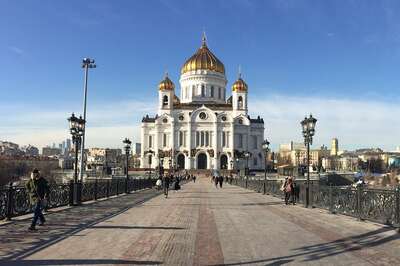
Head to the heart of Moscow with a professional guide on a 4-hour private walk through the city center. See Tverskaya and Old Arbat streets, Theatre Square with the world-famous Bolshoi Theatre, and the former KGB headquarters...
- Schedule Daily 09:00 - 20:00
- Languages English-speaking guide is guaranteed. Other languages are on request.
- Walking tours Transportation is not included
- PRIVATE TOUR This is a private tour, there won't be other people in your group
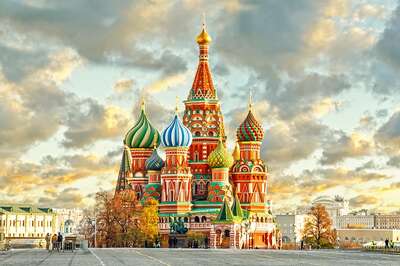
Panoramic City Tour. This Moscow tour is a great start to your trip and the best way to get acquainted with many of the city’s major highlights. Our professional guide will escort you on a route that includes Vorobyevi...
- Schedule Daily 09:00 - 18:00
- Tours by car Transportation by private car/minivan is included
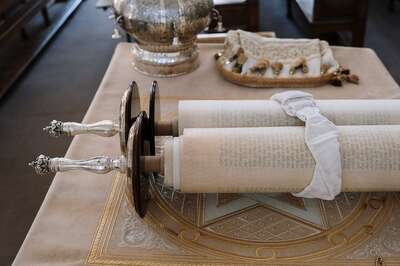
This tour offers a detailed look into the history and present-day life of the Jewish community of Moscow. On the tour, you will visit sites connected with the cultural and religious life of different Jewish families, as well...
- Schedule Monday, Tuesday, Wednesday, Thursday, Sunday 11:00 - 20:00 Friday 10:00 - 14:00 Saturday not available
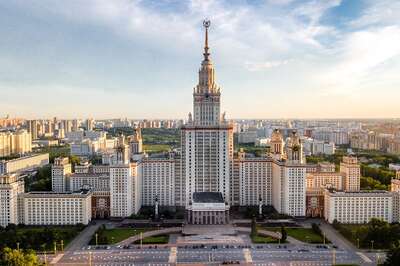
The tour begins with a drive or walk down Tverskaya Street – a Soviet masterpiece. In the years of Soviet power, Tverskaya began to undergo a transformation: it was widened to two and a half times its original size,...
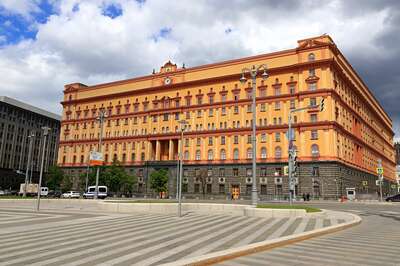
This is a very interesting and insightful tour. You will visit places connected with Stalin’s terror - a time of great repression and fear. You will be shown monuments to the victims of the repression. You will then...
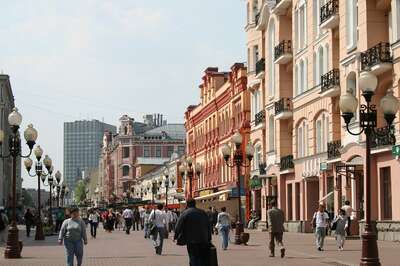
You will be told of the street’s interesting history and view the street’s artisan culture. You will also have the opportunity to view and purchase souvenirs from the street’s many craftsmen....
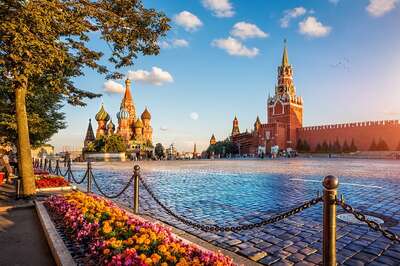
The Kremlin is truly a fascinating structure, at the same time it is an ancient tower, the city’s former military fortification, a palace, an armory, the sovereign treasury and the workplace of the Russian President....
- Schedule Monday, Tuesday, Wednesday, Friday, Saturday, Sunday 10:00 - 17:00 Thursday not available
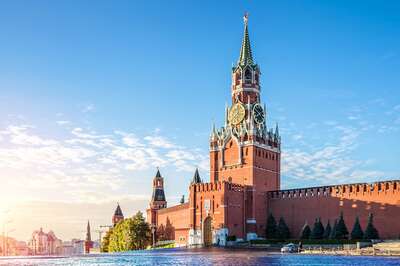
This world-famous gallery contains masterpieces of Russian art beginning in the 10th century up until today. You will view exquisite Russian icons and paintings from the 18th and 19th century including works by Rublyov, Karavak,...
- Schedule Monday not available Tuesday, Wednesday, Sunday 10:00 - 17:00 Thursday, Friday, Saturday 10:00 - 20:00
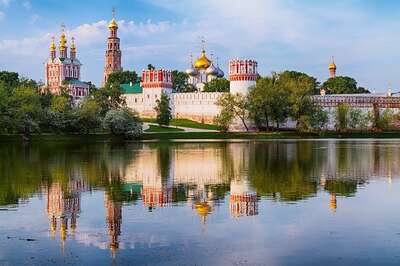
Tour of the Novodevichy Monastery. Founded in 1524 by Grand Prince VasiliIoanovich, the original convent was enclosed by fortified walls and contained 12 towers. The structure served as a convent for women of noble birth...
- Schedule Daily 09:00 - 17:00
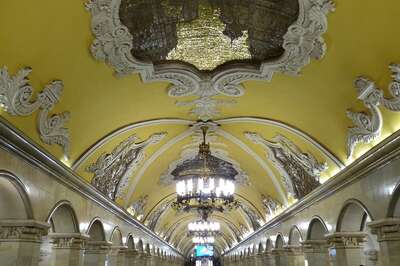
The Moscow Metro is one of the largest and most grandly built metro systems in the world. It was meant to be a showcase of the Soviet Union’s achievements for both the Russians themselves and for visitors from abroad....
- Schedule Daily 10:00 - 17:00
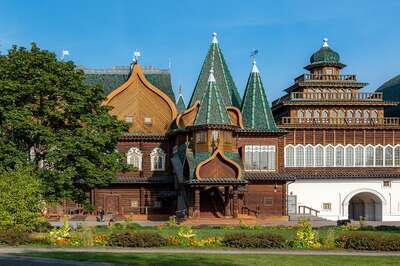
The history of Kolomenskoye stretches back for centuries. In 1380, Dmitri Donskoi’s army passed through Kolomenskoye on their way to the Kulikovo battlefield, and it was here that Donskoi celebrated his victory over...
- Schedule Monday not available Tuesday, Wednesday, Thursday, Friday, Sunday 10:00 - 17:00 Saturday 11:00 - 18:00
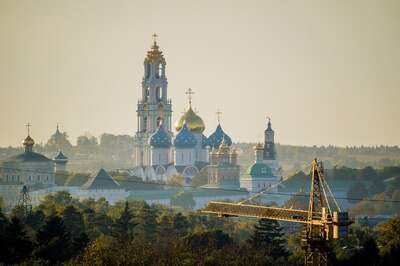
Considered by some to be the Russian Vatican, Sergiev Posad is the temporary residence of the Patriarch of the Russian Orthodox Church. The Trinity St. Sergius Monastery (Lavra) was built in the first half of the 1340s by...
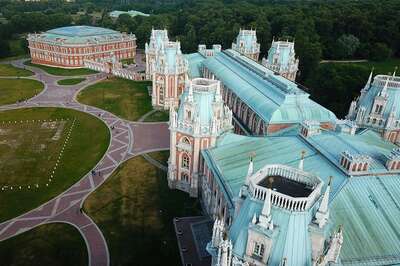
The Tsaritsyno Estate is located in the southern part of Moscow. The estate was constructed for Catherine the Great by the Russian architects Bazhenov and Kazakov in a romantic gothic style. The complex includes a landscape...
- Schedule Monday not available Tuesday, Wednesday, Thursday, Friday 11:00 - 17:00 Saturday 11:00 - 19:00 Sunday 11:00 - 18:00
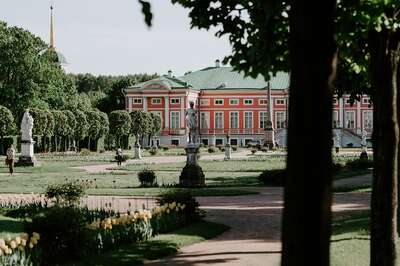
The Kuskovo Estate often called the Moscow Versailles due to its perfectly preserved French park, is an example of an 18th century, luxurious Moscow summer residence. Its history dates back to 1715, when the village of Kuskovo...
- Schedule Monday, Tuesday not available Wednesday, Thursday, Friday, Saturday, Sunday 10:00 - 18:00
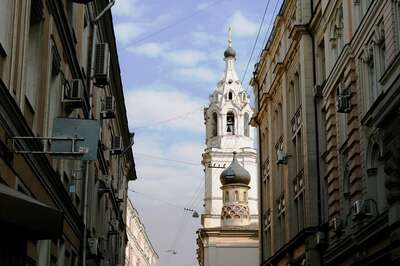
Vodka is an important component of Russian life, an element of national identity and everyday culture. We invite you to visit the Vodka Museum and feel the atmosphere of long-gone centuries. You will get to know the story...
- Schedule Daily 10:00 - 19:00
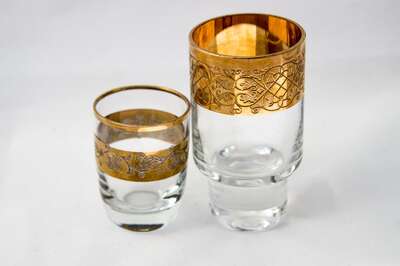
Take this opportunity to learn more about the Russian writer Lev Tolstoy. During the visit to the museum you will see part of a vast collection of exhibits connected to Tolstoy and his family including books and personal...
- Schedule Monday not available Tuesday, Wednesday, Friday, Saturday, Sunday 10:00 - 17:00 Thursday 12:00 - 19:00
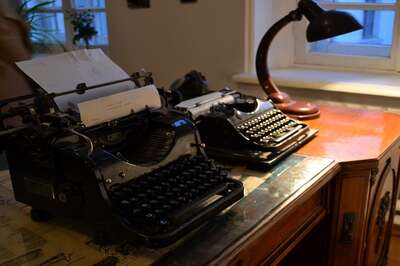
This apartment museum located close to Patriarch Ponds became the prototype of the "bad apartment" described in the novel "The Master and Margarita." Currently the museum's collection includes more than three thousand...
- Schedule Monday not available Tuesday, Wednesday, Friday, Saturday, Sunday 12:00 - 19:00 Thursday 14:00 - 21:00
Express to Russia specializes in Moscow city excursions, an essential part of your Moscow travel itinerary. We offer a large variety of day excursions throughout Moscow and its suburbs. From Red Square and the Kremlin to a city tour of Moscow’s Old Arbat Street or the Moscow metro , an excursion specializing in Stalin and the KGB and much more. No travel to Moscow is complete without taking a few of our day tours that most meet your interest in Russia.
Moscow City Tours
Our Moscow day excursions can be organized on foot or with transport. All of our excursions are led by an experienced guide, specializing in the subject matter of the tour. Excursions are privately run and can be booked for 1 traveler all the way up to large groups of travelers. We run our Moscow city tours in every season. This is because travel to Moscow is excellent in any season. In the summer take a stroll through Gorky Park or take a riverboat tour along the Moskva River. In the winter, see Moscow’s winter wonderland of ice and snow and then settle in for a cozy lunch or dinner with a hot bowl of borsht. In winter, spring and fall, you can beat the crowds at all of Moscow’s main attractions and museums. Regardless of when you come, Express to Russia will make sure that your trip is one of your best vacations ever.
Our travel brands include

Express to Russia
Join us on Facebook
We invite you to become a fan of our company on Facebook and read Russian news and travel stories. To become a fan, click here .
Join our own Russian Travel, Culture and Literature Club on Facebook. The club was created to be a place for everyone with an interest in Russia to get to know each other and share experiences, stories, pictures and advice. To join our club, please follow this link .
We use cookies to improve your experience on our Website, and to facilitate providing you with services available through our Website. To opt out of non-essential cookies, please click here . By continuing to use our Website, you accept our use of cookies, the terms of our Privacy Policy and Terms of Service . I agree

Explore the world with tourHQ
- Destinations
- I am a Guide
- I am a Traveller
- Online Experiences
- Currency (USD)
The epicenter of modern Russia, Moscow booms with shiny new skyscrapers, the bulbous onion domes of the tsars and politically-rich Red Square. Explore the metropolis with a tourHQ guide.
Search Cities in Russia
Moscow Tour Guides
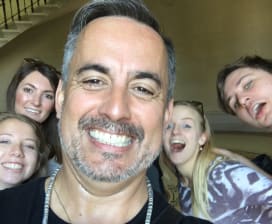
Jorge De Reval
I am a happy, enthusiastic, amusing Spanish guy. Lively and hyperactive. Recently became qualified ...
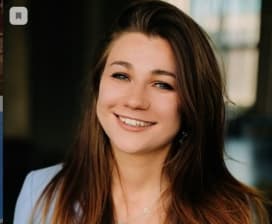
Tanya Neyman
I became a local tour guide 6 years ago in Moscow and now we are a team of passionate guides ...
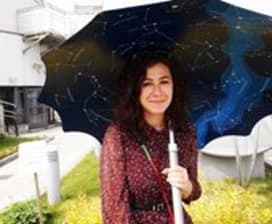
Ekaterina Smirnova
Please note: I'm away from Moscow June 11-26, 2021. I am a native Muscovite but traveled ...
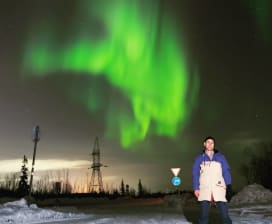
Vasil Valiev
Occupation: Senior guide-translator. Guiding since 2012 in Altai mountains, North of Russia ...
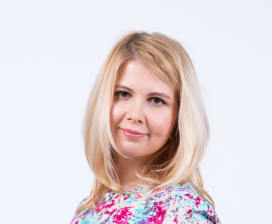
Marina Spasskaya
Hi there! My name is Marina and I'm a licensed Moscow city guide.Moscow is like ...
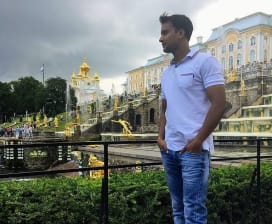
Greetings from Saint Petersburg. This is your private tour guide Ali in Saint Petersburg. I was ...
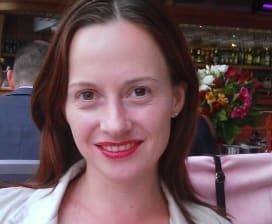
Maria Deulina
Dear friends,My name is Maria, I am a licensed guide about Moscow. Being a native Muscovite I have ...
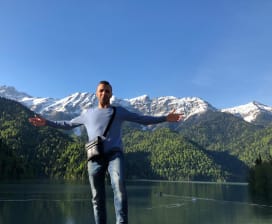
Ashraf Rabei
My name is Ashraf ...I'm graduated from faculty of tourism and hotel guidance department, in Egypt ...
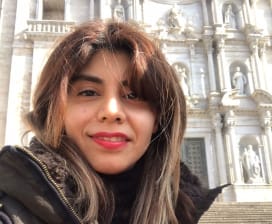
Hengameh Ghanavati
My name is Hengameh Ghanavati. Im a licenced international tour guide since 2014 and I have ...
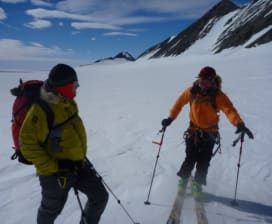
Todd Passey
We are a cooperative of highly experienced, certified, professional guides. Each guide takes ...
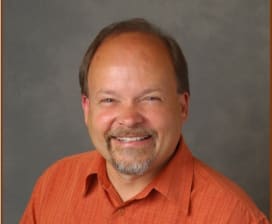
Tim Brinley
Young at heart, adventurous, organized, good people skills, a good speaker, entertaining, ...

Nikolay Borkovoy
Hace 32 años nací en la ciudad de Moscú. Tengo experiencia trabajando como guía turístico en ...
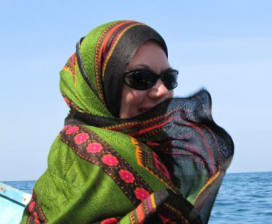
Anika Socotra-International
Our mission is to provide you with the kind of holiday you want: where you can relax in wonderful ...
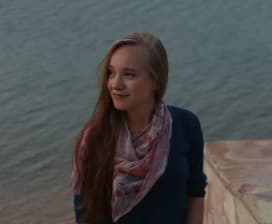
Al'bina Andreeva
Moscow guide&photo! Feel Putin vibes and explore the enigmatic Russian soul through history ...
The sprawling, mind-boggling metropolis of Russian Moscow has long been one of the theatrical stages on which the great dramas of Europe and Asia have been played out in grand style. Burned by Napoleon in 1812, immortalised by Tolstoy, utilised by the Bolsheviks and championed as a bastion of heroic defiance by the post-war communists, it’s almost hard to believe just how defining the historical events that found their home on Moscow’s streets have been. Moscow tour guides will easily be able to mark the major must-see landmarks on the map, from the onion-domed orthodox Saint Basil's Cathedral, to the political powerhouse of Red Square just next door, while others will be quick to recommend a ride on Moscow’s famous subterranean metro system, or a visit to the UNESCO-attested Novodevichy Convent on the city’s southern side. But Moscow is a city also in the throes of a cultural wrangling between the old and the new. Creative energies abound here: Boho bars and pumping super clubs now occupy the iconic mega structures of the old USSR; high-fashion outlets, trendy shopping malls and luxurious residential districts stand as testimony to a city that’s now the undisputed playground of the world’s super-rich, while sprawling modern art museums dominate the cultural offering of the downtown districts north of the Moskva River.
Tell us your destination, date, and group size.
Our team of travel experts and guides will design a tailored itinerary just for you., enjoy your trip with peace of mind knowing everything is taken care of..
Say Goodbye to Travel Stress
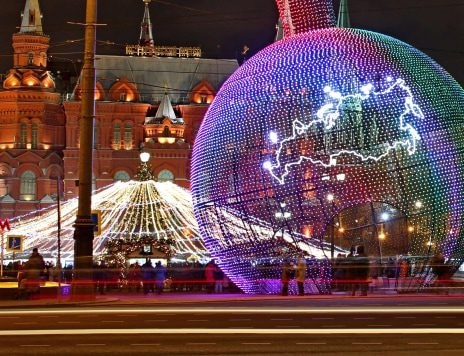
Choose Currency Close modal
- USD US, dollar
- GBP British Pounds
Cookie icon We use cookies!
We, and third parties, use cookies for technical and analytical purposes, for marketing purposes and for integration with social media. For more information, refer to our Privacy Policy and Terms of Consent.
By clicking on 'I agree', you consent to the use of these cookies.

IMAGES
VIDEO
COMMENTS
Le Centre de la Tour de Gassies, établissement de rééducation et de réadaptation fonctionnelle spécialisée en MPR et Gériatrie, est implanté dans l'agglomération bordelaise, à Bruges, à proximité de la rocade, dans un environnement privilégié au cœur d'un parc arboré de 17 ha. L'établissement, hautement spécialisé en SSR, est centre de référence sur son territoire et au ...
Les 2 services sont localisés au Centre de La Tour de Gassies à Bruges, dans l'agglomération de Bordeaux. L'admission au CRPS et au C2RP se fait via un dossier unique à envoyer au secrétariat du CRPS ou du C2RP en fonction du type de demandes. Dans le cadre de ses missions de Centre référent régional, le C2RP propose des ...
La Tour de Gassies. Centre de réadaptation, de convalescence. Écrire un avis. Prendre RDV. Partager par SMS Partager par Mail Partager sur Facebook Partager sur Twitter Partager sur LinkedIn. Présentation Horaires Avis Contact INSEE. Afficher le numéro. Contacter par mail. rue Tour de Gassies 33520 Bruges - Y aller.
The Center for Physical Medicine and Rehabilitation La Tour de Gassies (in a new tab) is a Private Health Establishment of Collective Interest (ESPIC).. It takes care of the physically handicapped, of various origins.. The establishment has several poles: Neurology (central neurology and spinal cord injuries) and AMBRET (musculoskeletal system and/or burn victims), Ambulatory Medicine and a ...
Tour de Gassies | 393 followers on LinkedIn. établissement de soin participant au service public hospitalier regroupant: - un centre de médecine physique et de réadaptation, - une unité de soins de longue durée, - un centre de réadaptation psychosociale, - un centre de reconversion professionnelle ... Human Resources Services Bordeaux ...
L'unité des grands brûlés reçoit des patients, essentiellement des adultes mais traite régulièrement aussi des enfants. Ils sont alors accueillis en hospital...
Centre de la Tour de Gassies, Bruges, Aquitaine, France. 37 likes. Le Centre de la Tour de Gassies recouvre plusieurs activités sanitaire: MPR, Gériatrie et Psychiatrie
Reportage du CRR (Centre ressource réhabilitation psychosociale) mené au Centre de réhabilitation psychosociale de la Tour de Gassies, pour présenter un de n...
DE RÉHABILITATION PSYCHOSOCIALE DE LA TOUR DE GASSIES : DEUX SERVICES Le CRPS de la Tour de Gassies Centre de soins de réhabilitation psychosociale de proximité: Accueil ambulatoire des usagers de Bordeaux, des communes de la Rive Gauche et d'Arcachon Médoc. Possibilité d'accueil en hospitalisation complète pour les usagers de Gironde.
The mean duration of post-stroke hospitalization at the "La Tour de Gassies" CPRM was 195.7 ... donc être impliqué précocement dans le processus de réinsertion professionnelle et la collaboration entre les services de MPR et les services de santé au travail mériterait d'être davantage développée. Plusieurs pistes pourraient être ...
Centre de rééducation Centre de la Tour de Gassies Bruges. Découvrez le numéro de téléphone, les avis clients (21), l'adresse, les horaires d'ouverture et les photos du Centre de rééducation. ... Services : Toilettes. Tags: Centre de rééducation, Adresse : Rue de la Tour de Gassies; 33520 Bruges; groupe-ugecam.fr ...
Abstract Objective . To study work re-entry by patients having suffered a stroke at least 3 years previously. Patients and methods . This was a retrospective survey in which a questionnaire was administered to all patients admitted after a first stroke to the "La Tour de Gassies" Centre for Physical and Rehabilitation Medicine (CPRM) in France between January 2005 and June 2007 and who ...
What companies run services between Bordeaux, France and Centre Tour de Gassies, France? Tbm operates a vehicle from Fondaudège - Muséum to Champ de Courses - Treulon every 10 minutes. Tickets cost €2 and the journey takes 14 min. Alternatively, TransGironde operates a bus from Pl. Gambetta to Le Vigean hourly.
Tour de Gassies to Porte de Bourgogne by walk and bus The journey time between Tour de Gassies and Porte de Bourgogne is around 47 min and covers a distance of around 11 km. Services are operated by TransGironde. Typically 103 services run weekly, although weekend and holiday schedules can vary so check in advance.
There are 4 ways to get from Gare de Bordeaux-Saint-Jean to Centre Tour de Gassies by tram, bus, taxi or car. Select an option below to see step-by-step directions and to compare ticket prices and travel times in Rome2Rio's travel planner. Recommended Tram. Take the tram from Gare Saint-Jean to Champ de Courses - Treulon.
Traces of the "noble house of Gassies" can be found from the 14th century onwards. The de Gassies family, also known as La Tour de Gassies, belonged at that time to a long line of Bordeaux bourgeois, affiliated to the great illustrious families of the Gironde. From the 1 4th to the 16th century, the greatness of the Gassies.
What companies run services between Gare de Bordeaux-Saint-Jean, France and Tour de Gassies, France? Tbm operates a vehicle from Gare Saint-Jean to Champ de Courses - Treulon every 15 minutes. Tickets cost €2 and the journey takes 29 min. Alternatively, you can take a bus from Gare de Bordeaux-Saint-Jean to Tour de Gassies via Gambetta ...
This tour is a perfect choice for those who wish to get to know Moscow in depth. One of the highlights of this package is the KGB history tour which gives an interesting perspective on the Cold War. You will also have time for exploring the city on your own or doing extra sightseeing. $ 941 From/Per person. Details.
City Tour with Visit to St. Basils & Red Sq. with transport. 5 hours. Panoramic City Tour. This Moscow tour is a great start to your trip and the best way to get acquainted with many of the city's major highlights. Our professional guide will escort you on a route that includes Vorobyevi... $ 107 From/Per person.
Tell us your destination, date, and group size. Our team of travel experts and guides will design a tailored itinerary just for you. Enjoy your trip with peace of mind knowing everything is taken care of. The epicenter of modern Russia, Moscow booms with shiny new skyscrapers, the bulbous onion domes of the tsars and politically-rich Red Square.
Four Day Moscow Tour. 0. 4 days / 3 nights. Personal arrival and departure transfers. Guide speaking your language (English, German, French, Spanish) Private car. Entrance tickets to museums. Visa support (invitation) if you book accommodation. Price from 106,94.
What companies run services between Centre Tour de Gassies, France and Bordeaux, France? Tbm operates a vehicle from Champ de Courses - Treulon to Fondaudège - Muséum every 10 minutes. Tickets cost €2 and the journey takes 15 min. Alternatively, Tbm operates a bus from Centre Tour de Gassies to Gambetta Mériadeck hourly.
What companies run services between Centre Tour de Gassies, France and Gare de Bordeaux-Saint-Jean, France? Tbm operates a vehicle from Champ de Courses - Treulon to Tauzia every 15 minutes. Tickets cost €2 and the journey takes 27 min. Alternatively, you can take a bus from Centre Tour de Gassies to Gare de Bordeaux-Saint-Jean via Le Vigean ...